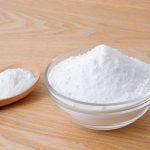I’ll never forget my chili disaster…
Early in my cooking career at New York’s Boat Basin Cafe, I was tasked with a massive batch of chili for a festival. I loaded up on the best ingredients – meat, veggies like tomatoes and beans, and tons of spices. I was sure my chili con carne would be a hit…
…But it was a watery mess! In my excitement, I forgot about all the extra moisture the ingredients would release. I vowed to become a chili-thickening master!
After years of experimenting, I know how to fix ANY slow cooker chili. Want to learn the secrets of rich, spoon-coating texture? Here’s how to use:
- Cornstarch slurry
- Flour
- Masa harina
- Creative solutions (nuts, miso, even chocolate!)
…And more! No more thin, sad chili for you. Let’s get started!
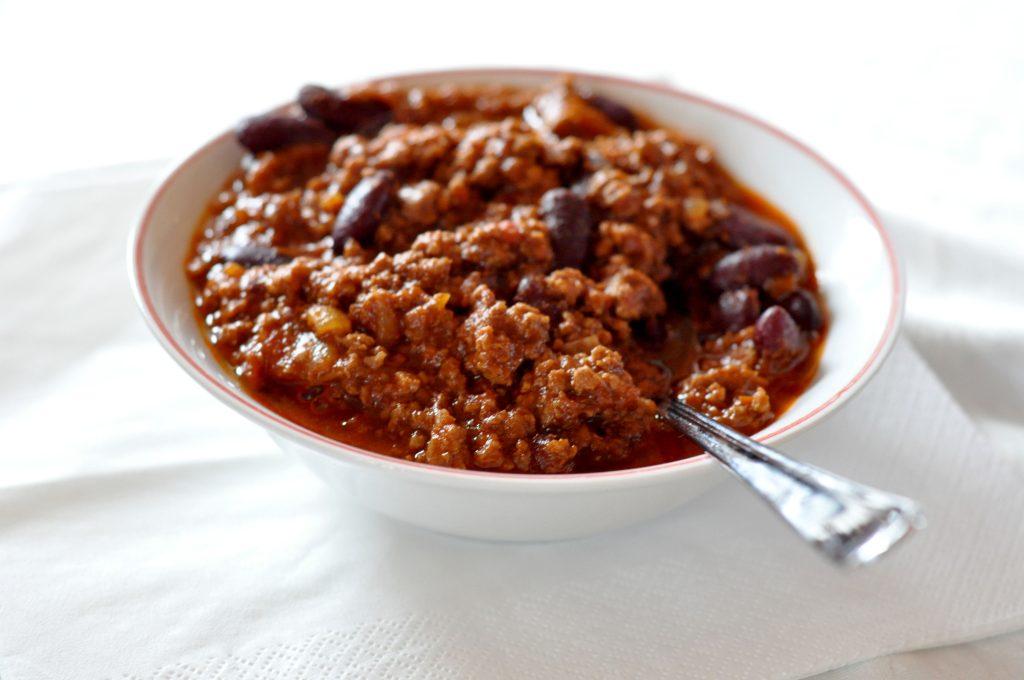
How to Thicken Chili in a Crockpot
Need to thicken your chili fast? Here are my go-to methods:
- Cornstarch or Flour Slurry: Whisk together equal parts cornstarch/flour with cold liquid. Stir into your [crockpot chili] in the last 30-60 minutes of cooking. Just 2 tablespoons per 6 cups of liquid works wonders!
- Reduce It: Take the lid off your [slow cooker] and let excess moisture evaporate. This also intensifies the flavor. I usually reduce mine for 30-60 minutes near the end.
Pro Tip: Whisk your slurry vigorously to avoid lumps, and make sure it’s fully mixed into your chili.
Why These Methods?
- Speed: They thicken your chili quickly.
- Convenience: You probably already have cornstarch or flour on hand.
Need a recipe? Try [ground beef chili], [turkey chili], or even [white chicken chili] – all perfect for these techniques! Or try our recipe with a surprising coffee twist – it adds a delicious depth!
💧 Why Does My Crockpot Chili Get Watery?
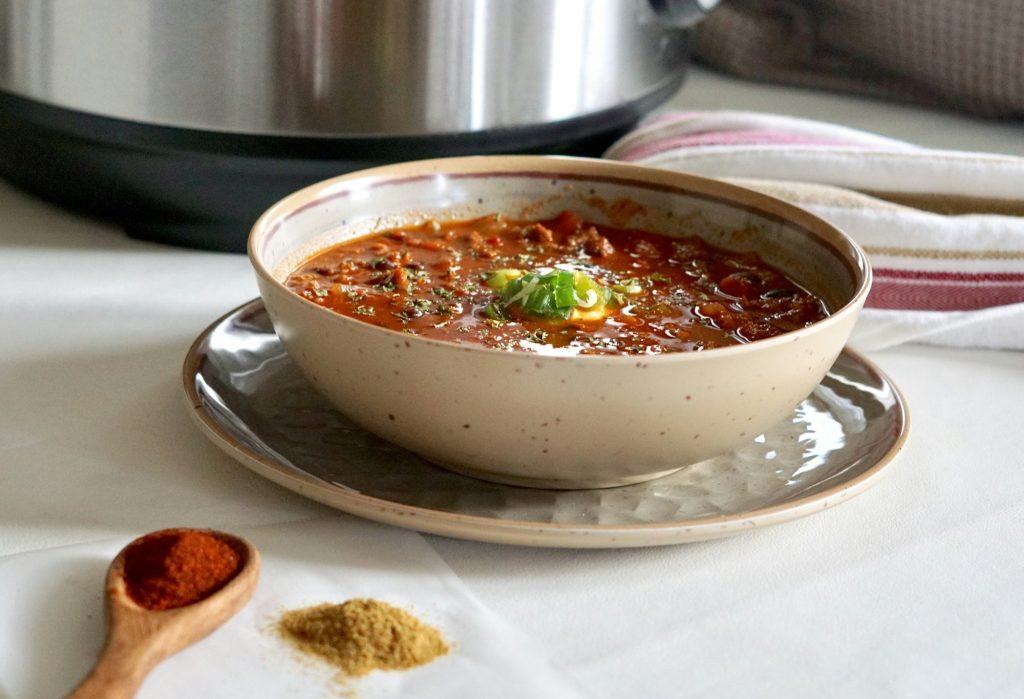
I’ve been there too! Here are the main culprits behind thin chili:
- Veggie Overload: Onions, peppers, tomatoes – they all release moisture as they cook. Pre-roasting them before adding them to your slow cooker evaporates excess liquid and boosts flavor. Or try less watery veggies, like mushrooms.
- The Canned Bean Trap: They’re convenient, but canned beans come packed in liquid that thins your chili.
- Slow Cooker Challenge: Long, moist cooking can make some wateriness inevitable. But don’t worry! The next sections cover foolproof techniques to fix it.
💁🏻♂️ My trick: use dried beans instead. They take more time, but as Chef Anne Burrell says, the better texture and thicker chili are worth it!
Fixes at a Glance:
| Cause of Watery Chili | Fixes |
|---|---|
| Excess veggie moisture | Pre-roast veggies, use less watery varieties |
| Canned beans | Use dried beans |
| Long, moist slow cooker cooking | See my thickening tips below! |
🥣 Classic Thickening Techniques
As a classically trained chef, I rely on these tried-and-true methods:
Method 1: Cornmeal & Masa Harina
- Choose Your Thickener: Decide between cornmeal (milder flavor) or masa harina (more pronounced corn taste).
- Measure: Use 2-3 tablespoons per 6 cups of chili.
- Timing Is Key: Add it during the last 30 minutes of cooking.
- Simmer: Let the chili simmer gently to allow the thickener to work its magic.
Method 2: Tapioca or Arrowroot Starch
- Create a Slurry: Whisk 2-3 tablespoons of tapioca or arrowroot starch with a small amount of COLD water or broth until smooth (no lumps!).
- Timing: Add the slurry during the last 30 minutes of cook time.
- Incorporate: Stir the slurry thoroughly into your chili.
- Simmer: Bring the chili back to a gentle simmer until it reaches the desired thickness.
📝Important Notes:
- Start Small: If you’re unsure, begin with a smaller amount of thickener and add more if needed.
- Flavor Impact: Both methods subtly thicken while adding their unique flavor profiles. Choose what complements your chili best.
❤️Why I Love These:
- Gentle Thickening: They don’t overpower your [tomatoes], [beans], or other starring ingredients.
- Dietary Flexibility: Tapioca and arrowroot are gluten-free and vegetarian-friendly!
Comparing Chili Thickeners: Strengths, Weaknesses, & Best Uses
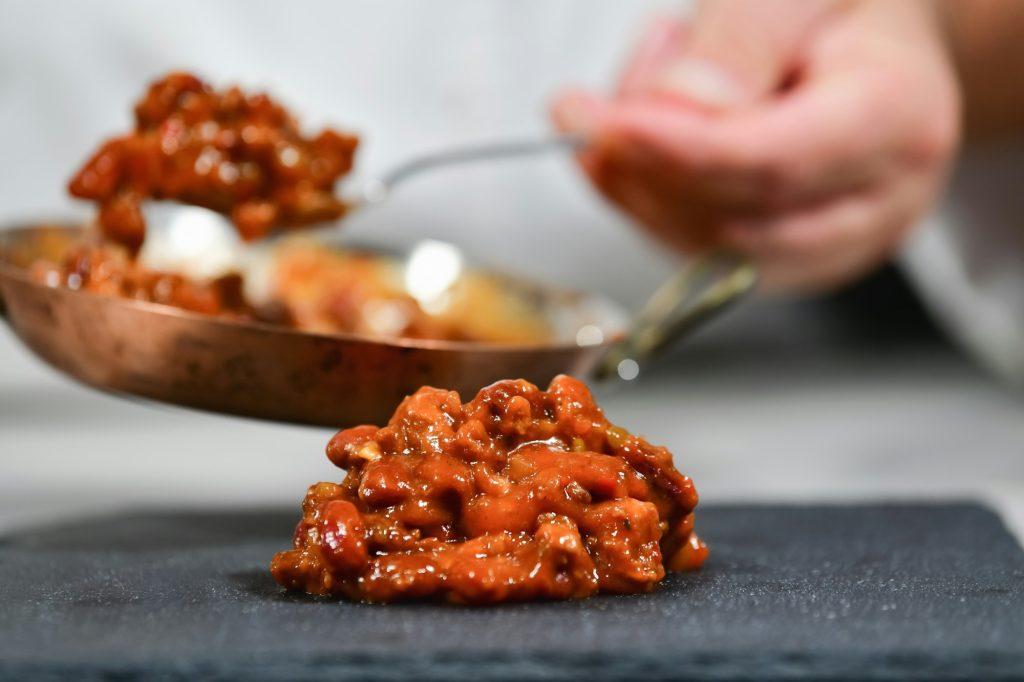
Each method has pros and cons. Here’s the breakdown:
| Thickening Method | Pros | Cons | Best For |
|---|---|---|---|
| Cornstarch Slurry | Super quick fix Easy to find | Can leave a raw starch taste Breaks down with prolonged cooking | Last-minute thickening When slight flavor change is acceptable |
| Simmering Uncovered | Concentrates flavors naturally No added ingredients | Needs watching to avoid burning Can make chili too intense if overdone | Hands-off thickening When you can stir occasionally |
| Masa Harina | Delicious corn flavor Perfect for chili con carne and Southwestern styles | Can get gummy if you add too much | Traditionalists seeking layered corn flavor |
📝 Important Note: Think about your recipe’s flavors and any dietary needs (gluten-free, etc.) when choosing your thickener.
💁🏻♂️ Pro Tip: The best chili often uses a combo of techniques! Try reducing slightly, THEN adding a bit of slurry for foolproof thickness.
🌟 Creative Thickening Solutions
Want to go beyond the basics? Try these unique ways to thicken AND boost flavor:

Method 1: Nutty Boost
- Choose Your Nut: Almonds, cashews, or pecans all work well.
- Grind Them Up: Use a food processor or spice grinder to create a fine meal-like texture.
- Add to Base: Incorporate the ground nuts into your chili’s base (onions, peppers, spices, etc.) while browning.
- Cook & Thicken: Continue cooking your chili as usual. The nuts will release their thickening power and add richness.
Method 2: Umami Surprise
- Choose White Miso: Its mild flavor blends best with chili.
- Whisk & Add: Whisk a couple of tablespoons of miso paste with a bit of your chili’s broth until smooth. Stir this back into the pot towards the end of cooking.
- Simmer: Let the chili simmer gently to fully incorporate the miso and allow it to thicken.
Method 3: Chocolate Secret
- High-Quality Chocolate: Choose dark chocolate (70% cacao or higher) for the best flavor.
- Melt & Stir: Add an ounce or two of chocolate to your simmering chili and stir until melted and combined.
- Optional: Spice It Up! A pinch of cayenne pepper with the chocolate creates an incredible flavor contrast.
🤔Thinking Outside the Box
These techniques show how thickening chili can also be a flavor adventure! Experiment and discover your favorites.
💡 The “Thickening Base” Pro Tip
Want thick, flavorful chili from the get-go? Here’s my secret weapon:
- Brown Your Aromatics: Start with onions, garlic, chili powder… the usual suspects!
- Sprinkle & Toast: Add 2-3 tablespoons of masa harina, tapioca starch, OR cornstarch. Cook for another 2-3 minutes, stirring constantly.
- Build Flavor: This toasts the thickener, unlocking its power AND deepening the flavors of your base.
- Add Liquid & Simmer: Now add your [tomatoes], broth, etc. The thickened base will infuse the entire chili!
✨ Why It Works: Food science expert Harold McGee agrees – this technique extracts maximum color and aroma from your ingredients.
💁🏻♂️ My Experience: I learned this at the Boat Basin Cafe, and it changed my chili game! The flavor boost is incredible, along with natural thickening.
🧪 Experimental Thickening Approaches
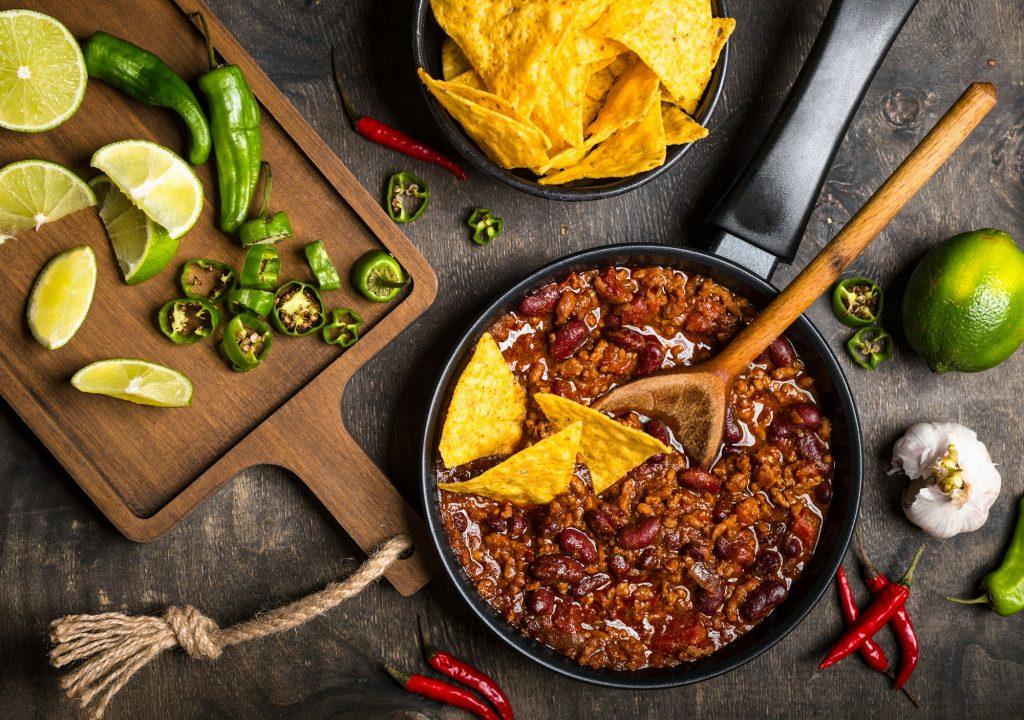
While earlier guidance focuses on tried-and-true techniques, adventurous cooks can also expand their thickening horizons with more unconventional ingredients and methods:
Unconventional Thickeners
- Fermented ingredients like kimchi, sauerkraut, or miso paste lend unique depth along with slight viscosity.
- Roasted veggie purees concentrate natural starches for creaminess without dulling vibrant flavors. Think sweet potatoes, butternut squash, or cauliflower.
- Nut and seed flours provide thickness via healthy fats and proteins. Finely grind almonds, walnuts or sunflower seeds to blend into the chili.
Thickening Technique Layering
- “Layered thickening” builds richness with an aromatic base, veggies, then finally starch and bean purees added later.
- Enhance slurries by replacing water with flavorful liquids like tomato paste broth, vegetable stock or hot sauce.
Novel Cooking Methods
- Use a pressure cooker for part of the chili’s cook time to accelerate thickening reactions.
- Reverse sear meat components before slow cooker additions for deeper flavor and fat to coat starches.
When attempting novel approaches, begin slowly and document your experiments. Innovative techniques can uncover new chili thickening favorites!
⚖️ Important Considerations
Getting the perfect chili texture is a balancing act. Here’s how to avoid common mistakes:
- Don’t Overdo It: You want thick and hearty, NOT gloppy. Aim for a chili that coats the spoon but still flows. As Wolfgang Puck says, it shouldn’t be like a meaty paste.
- Start Slow: It’s easier to ADD more thickener than fix an overly thick chili. Err on the side of slightly too thin at first.
- Flavor Matters: Choose thickeners that complement your chili’s existing flavors. Subtle options like arrowroot or nut flours add richness, while cornstarch is more neutral. For something special, try miso or a hint of chocolate!
👉The Bottom Line: A delicious chili is about both texture AND taste. Keep these tips in mind for the best results!
🌶️ Does Chili Thicken as it Cools?
Many people wonder if this happens, but the answer is… not really! Here’s why:
- Too Much Moisture: Tomatoes, peppers, and other chili ingredients release a lot of liquid. This prevents significant thickening while cooling.
- Expert Opinion: Chef Edward Lee agrees – the natural moisture makes substantial thickening unlikely.
- The Reality: Your chili might SEEM slightly thicker after chilling, but the difference will be minimal.
✨The Bottom Line: Don’t count on cooling to rescue a thin chili. If you want that perfect, spoon-coating thickness, you’ll need a proactive thickening method (like those we’ve discussed!).
🍽️ Additional Tips for Perfectly Thick Chili
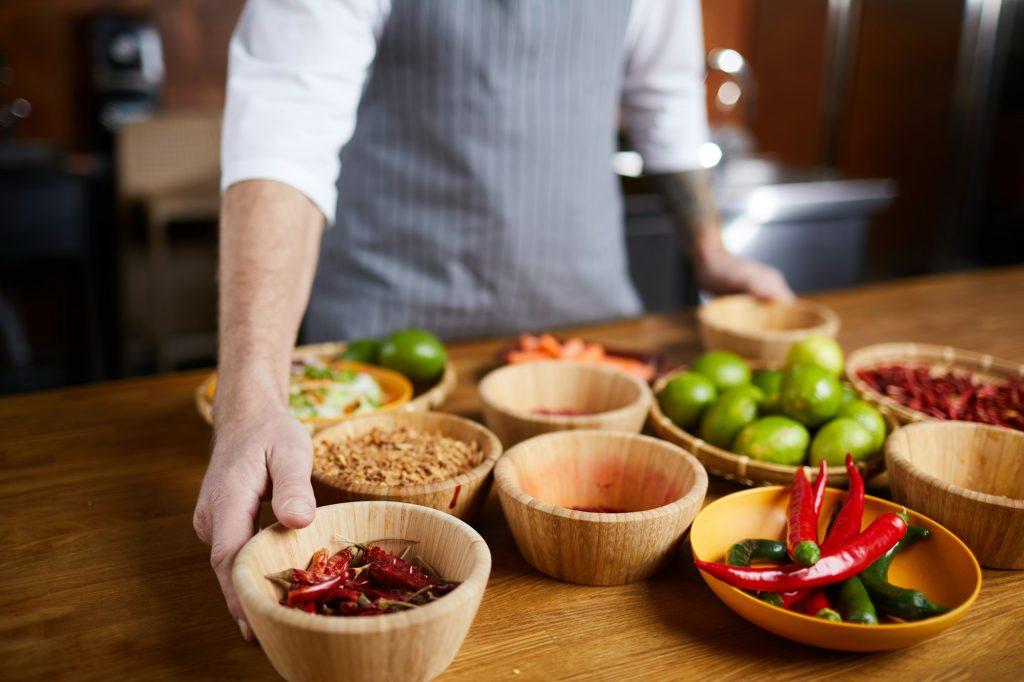
Master these techniques for the ultimate spoon-coating chili:
- The Bean Trick: Mashing some of your beans directly in the pot adds natural thickness and body. Carla Hall recommends mashing just a portion to keep some whole beans too.
- Tomato Paste Power: A few tablespoons of this concentrate boost color, flavor, AND thickness. For maximum depth, brown the paste with your aromatics!
- Spice It Up: A kick of heat (chili powder, cayenne, hot sauce) can create the illusion of a thicker chili. As Chef Paul Prudhomme said, the spicier the chili, the thicker it seems!
- Storing your chili masterpiece: learn how long it keeps in the fridge here.
🔬The Science of Thickening Chili

Understanding how thickeners work gives you control over your chili’s texture:
Starches: The Power Players
Cornstarch, flour, masa harina, tapioca, and arrowroot all contain starches that absorb liquid and swell when heated, creating a thicker chili.
💁🏻♂️ Pro Tip: Always whisk starches into a cold slurry to prevent lumps in your hot chili.
Roux: Classic Technique
Cooking flour in butter creates a base with toasted flavor and thickening power. The fat helps prevent starch clumping.
Nuts & Pastes: Subtle Boost
Finely ground nuts (almonds, cashews, etc.) and miso paste release fats and proteins that thicken the chili and add richness.
Veggie Power
Pureed starchy vegetables (like potatoes or cooked beans) add both body and natural thickening from their starches.
📝 Key Takeaway: Knowing HOW these thickeners work lets you choose the best ones for your chili’s flavor profile!
💁🏻♂️📝Key Takeaways: How to Master Chili Consistency
- The Science Matters: Understanding how thickeners work (starches absorbing liquid, etc.) gives you control over your chili’s texture.
- Quick Fixes vs. Flavor Depth: Slurries offer instant thickening, while techniques like reduction and the “thickening base” build complex flavors alongside the body.
- It’s Not Just About Starch: Nuts, miso, and even chocolate can thicken chili while adding unique flavor dimensions.
- Pre-Cook for Less Water: Pre-roasting veggies reduces excess moisture that contributes to thin chili.
- Dried Beans FTW: They release less liquid than canned beans, aiding a thicker chili.
- Layer Your Techniques: Combine methods (reduction + slurry, base + paste) for the most robust, foolproof results.
Troubleshooting FAQs
Does tomato paste REALLY thicken?
I occasionally skeptics doubt tomato paste’s thickening power. But its concentrated form means little goes a long way towards richness. Just a few tablespoons blended into chili and simmered yields noticeable consistency boosts from natural pectin. Boost tomato paste even further by browning it right in the aromatic base layer!
My chili’s gluten-free, help!
I’ve got you covered! Substitute cornstarch slurries with tapioca starch diluted in cold liquid instead. For flavor layering, use nut flours in the base rather than wheat flour. And don’t forget untraditional thickeners like grated potatoes or pureed lentils for hearty stiffness sans gluten!
Beans aren’t cutting it, still too thin!
Some bean varieties simply release less starch than others. When my chili remains loose even after bean mashing, I turn to powders like masa harina or ground toasted nuts sprinkled right into the pot for thickness insurance.
Want to Dive Deeper?
- On Cooking: A Textbook of Culinary Fundamentals: This classic text provides in-depth explanations of the science behind cooking techniques, including thickening. Great for serious food enthusiasts!
- The Food Lab: Better Home Cooking Through Science: J. Kenji Lopez-Alt applies scientific principles to everyday cooking. You’ll find practical tips and experiments specifically focused on chili and thickening methods.
- Harold McGee: This renowned food science writer offers accessible explanations of the chemistry behind our favorite dishes. Check out his website for articles and insights on thickening techniques.
